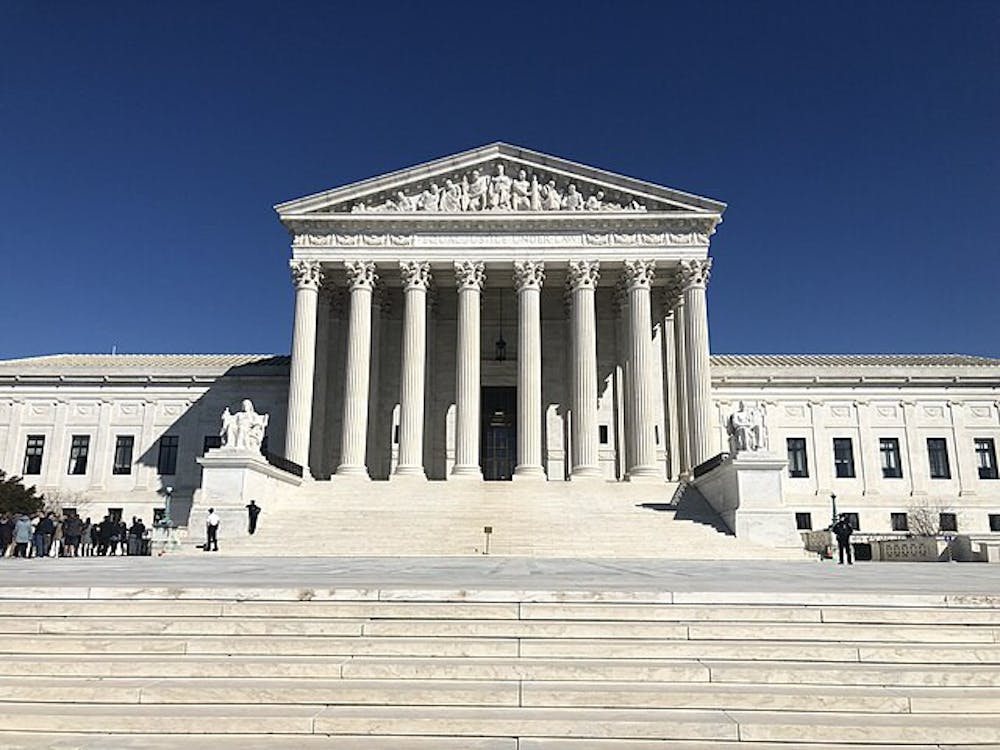The Supreme Court maintained a temporary pause on a Biden administration student debt relief plan Wednesday, leaving millions of borrowers on uncertain terms.
The Department of Justice had filed an emergency appeal in August asking SCOTUS to overturn a temporary halt imposed by a federal appeals court on the administration’s Saving on a Valuable Education (SAVE) Plan, which lowered minimum monthly payments for eligible borrowers and allowed those who originally borrowed under $12,000 to have their debt forgiven after 10 years.
In a brief Wednesday ruling, the Court rejected the DOJ’s request. The court did not give a reason for their decision, which is typical, but stated its expectation “that the Court of Appeals will render its decision with appropriate dispatch.”
As of August 2022, 30% of Duke undergraduate students took out student loans. For Duke borrowers, the average student debt amount was $24,219 across all loan types and $13,500 specifically for federal loans.
Current Duke students can review their financial aid history in DukeHub or visit the Karsh Office of Undergraduate Financial Support website for more information. Alumni can visit the Federal Student Aid website or contact their loan servicer directly for information on how much they owe.
The Court’s decision is not final — the case will continue to play out in the 8th U.S. Circuit Court of Appeals and could be sent back to the Supreme Court as early as this fall.
Representatives from both major political parties weighed in on the decision.
“We won’t stop fighting against Republican elected officials’ efforts to raise costs on millions of their own constituents’ student loan payments,” said White House Spokesperson Angelo Fernández Hernández.
Meanwhile, Republican Missouri Attorney General Andrew Bailey — who filed one of the initial lawsuits against the SAVE Plan — called the court’s order a “HUGE victory” in a Wednesday post on X.
SAVE is an income-driven repayment plan, meaning monthly payments are calculated based on the borrower’s income and family size. Over 8 million borrowers are currently enrolled in the plan and 400,000 Americans have already had their debts cleared.
Following the initial pause in July, the Secretary of Education Miguel Cardona announced that all borrowers currently enrolled in the SAVE Plan would be placed in “an interest-free forbearance,” meaning payments would be paused without interest continuing to accumulate while the litigation progressed. The Department of Education is publishing the most updated information on SAVE on the Federal Student Aid website.
The July decision follows the efforts of several Republican-led states to obstruct the Biden administration’s student loan forgiveness plans. Other elements of the White House’s student debt relief agenda were previously blocked in June by federal judges in Kansas and Missouri.
President Joe Biden’s original 2022 student debt relief plan, which sought to cancel up to $20,000 of federal student loans for qualifying borrowers, was struck down by SCOTUS in June 2023 in a 6-3 ruling.
Get The Chronicle straight to your inbox
Sign up for our weekly newsletter. Cancel at any time.

Zoe Kolenovsky is a Trinity junior and news editor of The Chronicle's 120th volume.

